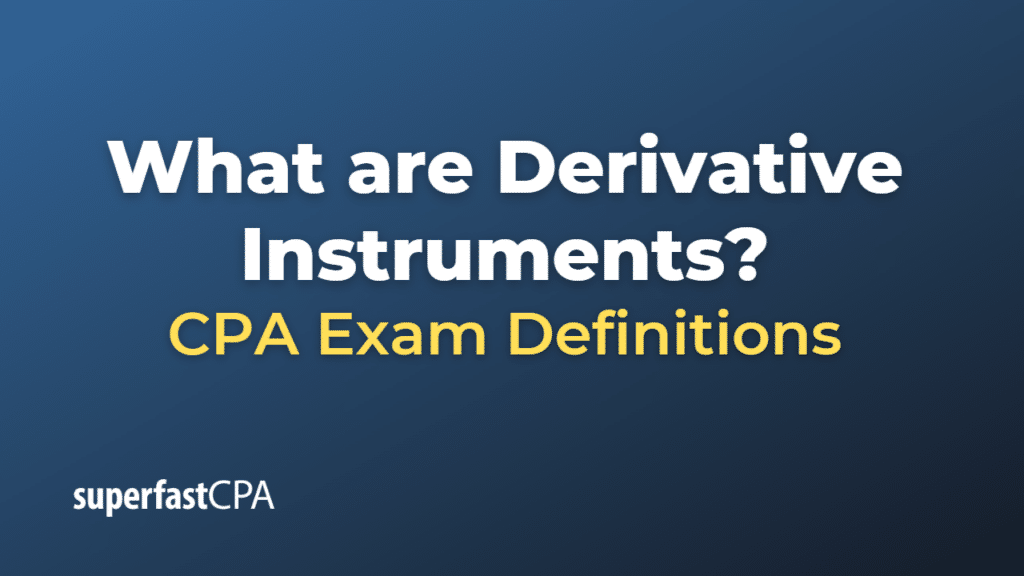Derivative Instruments
Derivative instruments are financial contracts that derive their value from an underlying asset or group of assets. The underlying assets can include stocks, bonds, commodities, currencies, interest rates, and market indexes. The value of a derivative changes as the value of the underlying asset changes.
There are several types of derivative instruments, each serving different purposes, such as hedging risks, increasing leverage, or accessing otherwise hard-to-trade assets or markets. Here are some of the most common derivative instruments:
- Futures Contracts: These are standardized contracts to buy or sell the underlying asset at a specific price on a future date. Futures are traded on an exchange, which means they’re standardized contracts with clear rules and regulations.
- Forward Contracts: These are similar to futures contracts but are private agreements between two parties and are not traded on an exchange. These can be customized to fit any commodity, amount, and delivery date.
- Options: An options contract gives the buyer the right, but not the obligation, to buy (call option) or sell (put option) the underlying asset at a specific price before a certain date. The seller, in return, collects a premium from the buyer for this right.
- Swaps: Swaps are contracts where two parties agree to exchange cash flows or other financial variables over a certain period. The most common type of swap is an interest rate swap, but there are also commodity swaps, currency swaps, and others.
- Credit Derivatives: These are contracts that transfer credit risk from one party to another. The most common type is a credit default swap, where one party agrees to pay another if a third party defaults on a loan or bond.
Derivatives can be quite complex and carry significant risk, such as counterparty risk, market risk, and liquidity risk. Therefore, they require a deep understanding before engaging in transactions involving them.
Example of Derivative Instruments
Here’s an example illustrating how a derivative instrument, specifically a call option, works:
Imagine you believe that the stock of Company XYZ, which is currently trading at $100 per share, will go up in the next three months. Instead of buying the stock outright, you decide to purchase a call option, which gives you the right to buy the stock at a set price, called the strike price, within a specific time frame.
Suppose you buy a three-month call option for Company XYZ with a strike price of $105. This option might cost you $10 (this price is often called the premium). Now, you have the right to buy Company XYZ shares at $105 any time in the next three months, no matter the market price.
Let’s say your prediction is right, and the stock price increases to $120. Because you hold a call option, you have the right to buy the stock at $105, well below the current market price. If you exercise the option, you could then immediately sell the stock at the market price of $120, netting a profit of $15 per share ($120 – $105), minus the $10 you paid for the option, for a total profit of $5 per share.
However, if the stock price doesn’t rise and stays at $100, or even drops, you wouldn’t exercise the option (since you wouldn’t want to pay $105 for a stock you could buy for $100 or less on the open market). In this case, the most you’ve lost is the $10 premium you paid for the option.
This simplified example shows the basic principle of how a derivative instrument (in this case, a call option) can work. Keep in mind that actual options trading can involve more complex factors and risks.













